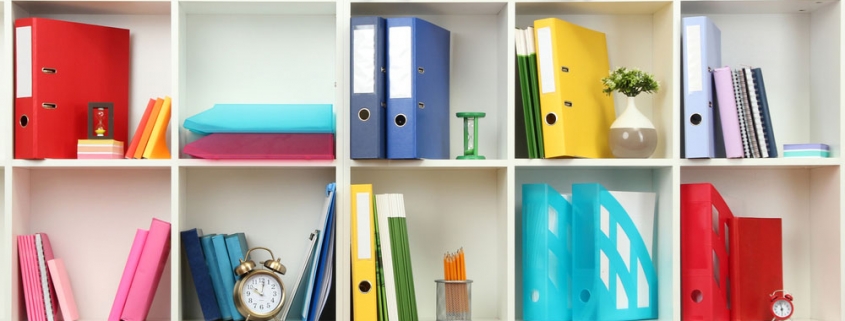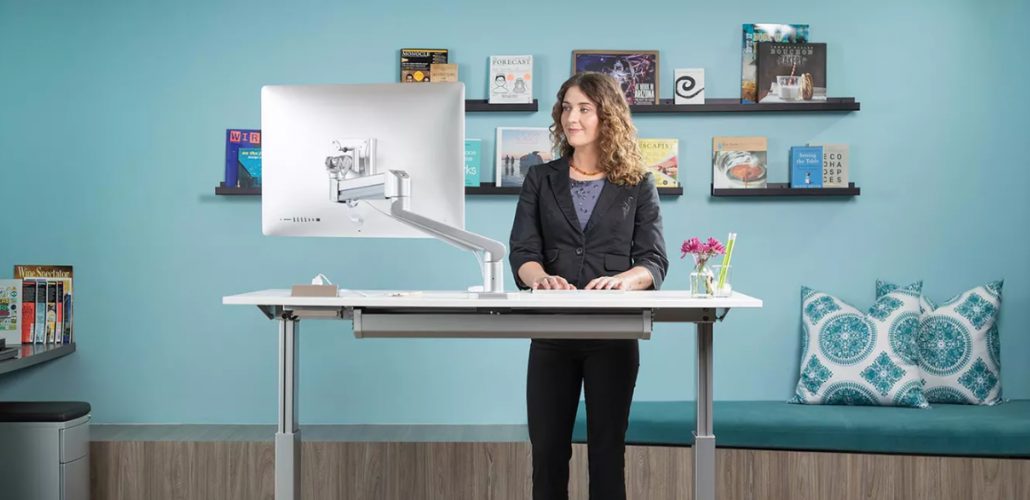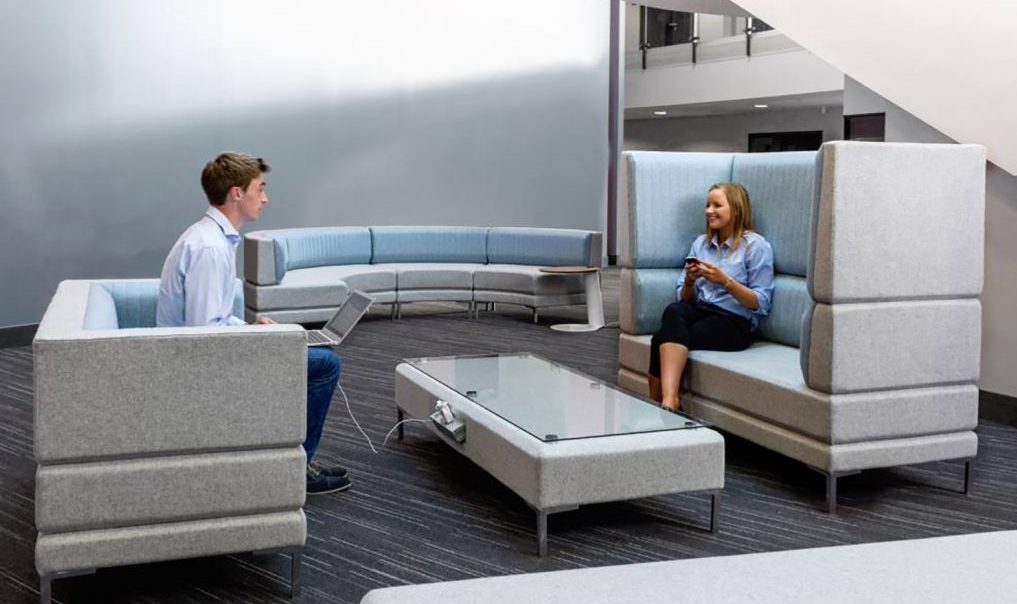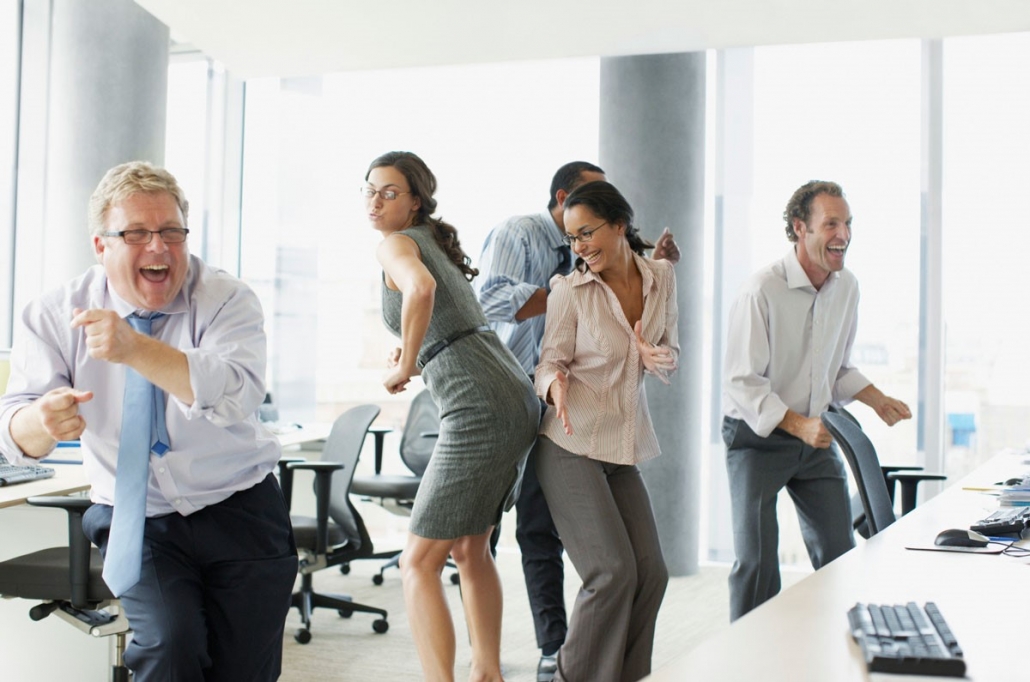What colours increase employee productivity, well-being and satisfaction
Different colours affect employees in different ways, learn how interior design can impact office behaviour
The psychology of colour is relevant in all areas of interior design, however, it becomes especially relevant when looking to increase employee productivity, well-being, and satisfaction in an office. Every colour evokes a different reaction or emotion in a person, learning which reaction or emotion comes along with each colour can ultimately create a better work environment. Here is a list of colours that will benefit your office overall:
Blue
Blue, especially light blue, is often associated with feelings of calmness and ease. Painting an office blue, and using blue decorations or floor coverings, will allow the employees to feel relaxed and less anxious about their daily tasks. Similarly, blue is associated with productivity because it is known to stimulate the mind.
Different shades of blue around an office have been proven to induce creativity; this is especially true in conference rooms where creative ideas are being talked about and passed around with other employees.
Red
Red is proven to increase energy in a room. Though not recommended to paint an entire office red, because the use of too much red creates feelings of anxiety, the use of red accent walls or red decorations can wake the mind up. Red also motivates people which will increase not only productivity levels but also wellbeing. According to an expert at Goldleaf Designs, custom home builders, simply by painting an office can change the entire overall mood of a workspace.
The combination of light blue and red around an office can also provide a creativity boost for employees. Combining a classic warm colour with a classic blue colour creates a visually pleasing balance for employees, making them more productive.
A popular trend in office interior design has been the use of red seating and wall hangings surrounded by an otherwise white or neutral background. This trend diverts attention to different areas of a workspace which will constantly stimulate the brain, creating new and productive ideas.
Yellow
Associated with the sun, yellow creates feelings of optimism and happiness in a work environment; thus, employee well-being and satisfaction. Yellow can also create creativity in the work environment because it stimulates the mind and creates feelings of self-assurance.
However, be careful of too much yellow. Yellow, like red and orange, is a warm colour and too much of it can create feelings of anxiety and even anger. If you are using yellow as a paint colour, make sure it is a pale yellow. Neutral walls with yellow accent decorations and accent wall may be a good choice to prevent the risk of overstimulation.
Green
Green, similar to the feelings associated with light blue, is associated with tranquillity and calmness. Different shades of green around the office can even create feelings or thoughts of nature which in turn, creates emotions of ease and satisfaction. Green also adds a sense of balance in a room which will help the well-being of employees.
Adding plants is an easy way to add green to an office space in addition to decorations and paint.
Green is often used in workspaces that work with money and finances a great deal because it constantly evokes the memory and thought of money to the employees as they work.
White
White is great for offices because it makes space feel bigger, cleaner, and even happier. White is practically a good choice for smaller offices because it will maximize the space. White also coordinates well with almost all other colours so it can be used as an accent wall in a room, a base, or on all walls. With the various ways in which white can be used in an office, it always adds to employee well-being by increasing overall happiness.
If white is used on all walls, it’s recommended that the walls have a fair amount of wall hangings and decorations in order to keep employees visually stimulated. Too much white can give off a “doctor’s office feel.”
A common colour theme in offices is the use of white and blue. The combination of white and blue, emulating a blue sky with clouds, makes employees optimistic and productive in addition to keeping the space lively. White walls accompanied by blue furniture is a popular way to create this colour theme.
Experimenting with colour and different colour combinations will affect employee productivity in a positive way while keeping employees happy and motivated to keep working. With proper research and planning, getting the right colour scheme for your office will be easy and beneficial. The possibilities are endless when redesigning your office space. For inspiration or to start discussing your design projects, get in touch with one of our interior experts today.

